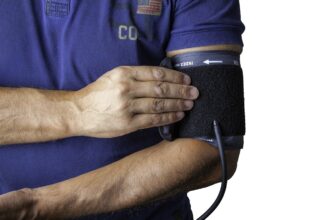Water safety plays a vital role in protecting patient health, yet it is often overshadowed by concerns that appear more immediate. Hospitals, long-term care facilities, and outpatient centers all rely on clean, well-managed water systems to support everyday care. From drinking stations to medical equipment, water touches countless parts of a healthcare environment. When water quality slips, vulnerable patients face heightened risks of infection and illness.
Hidden Threats in Healthcare Water Systems
Healthcare facilities contain complex plumbing networks that can harbor harmful microorganisms. Legionella, Pseudomonas, and other waterborne pathogens thrive in warm or stagnant water. Patients with weakened immune systems, respiratory issues, or recent surgeries are particularly susceptible to infection if exposed through sinks, showers, ice machines, or medical devices that require water.
Temperature fluctuations, low-flow fixtures, and long pipe runs can all create ideal conditions for bacterial growth. Construction projects and periods of reduced occupancy may also disturb biofilm or introduce contaminants into previously stable systems. These threats make consistent monitoring essential rather than optional.
Developing a Comprehensive Water Management Plan
Strong water safety programs begin with a clear management plan. Healthcare teams must identify high-risk areas, map out water flow, and set specific control measures for temperature, disinfectant levels, and equipment maintenance. Regular sampling and testing help detect early warning signs before issues escalate.
Staff training is equally important. Facility personnel need to recognize symptoms of water-related problems and know how to respond quickly. Simple steps such as flushing seldom-used outlets or reporting unusual odors can prevent larger system failures. Working with infection prevention specialists also ensures that protocols align with current healthcare standards.
Maintaining Equipment and Filtration Systems
Water fixtures and medical devices require routine maintenance to remain safe. Showerheads, faucets, ice machines, and humidifiers can accumulate sediment or biofilm if ignored. Scheduled cleaning and descaling reduce the potential for contamination.
Filtration systems deserve special attention. Filters that sit unchanged for too long lose effectiveness and may even release trapped contaminants back into the water supply. Healthcare facilities often rely on replacement water filters to keep systems functioning properly, especially in areas serving immunocompromised patients. Tracking change intervals and ensuring proper installation prevents gaps that could compromise safety.
Responding Quickly to Water Quality Issues
Even with strong preventive measures, problems can still arise. Facilities must be ready to respond quickly to test failures, patient symptoms, or unusual water system behavior. Immediate actions might include isolating affected areas, increasing disinfectant levels, or issuing temporary restrictions on water use. Coordinating with public health authorities and communicating clearly with staff and patients helps maintain trust during response efforts.
Creating a Culture of Safety
Water safety cannot depend on isolated checks or occasional maintenance. It requires ongoing commitment and awareness across an entire healthcare facility. Leaders who prioritize water quality create an environment where preventive maintenance, timely reporting, and proactive improvements become standard practice.
Strong water safety programs protect more than equipment. They safeguard the health of patients and staff, reduce infection risks, and reinforce the facility’s overall commitment to high-quality care. For more information, look over the infographic below.











